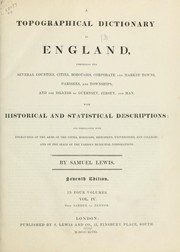The deserted village of West Whelpington, Northumberland.

-
Description
Evans DH, Jarrett MG. The deserted village of West Whelpington, Northumberland. Third Report, Part One. Archaeologia aeliana, or, Miscellaneous tracts relating to antiquity 15 (5th series):199 - 308, 1987. ABSTRACT: The medieval village of West Whelpington occupied a whinstone outcrop which was being quarried away for roadstone. Excavations, directed by Dr Michael Jarrett, began here in 1958, and continued (apart from a four-year break in the early 1960s, when quarrying briefly stopped) annually up to and including 1976. By the time that the quarry finally closed in 1979, about 14,000 square metres of structures and associated deposits had been investigated and recorded – representing some 20% of the entire outcrop. The results of the fieldwork undertaken before 1970 had previously been published in two reports in Archaeologia Aeliana. The original intention had been to publish the more extensive programmes of open-area excavation undertaken between 1970 and 1976 in a single monograph in the same series; however, the editor later opted instead for this work to be presented as three discrete parts, which would appear in successive years. This first part presents the evidence for the structural sequence, and the associated artefacts, from the medieval and post-medieval periods. Part Two contained the overall interpretation, wider discussion, and the results of the 1979 township survey of surviving earthworks and standing buildings. Part Three discussed the evidence for the prehistoric and Romano-British occupation on this whinstone outcrop. Medieval occupation had certainly begun by the 12th century, and possibly even by the late 11th century; no firm evidence was found to indicate a pre-Conquest origin for this settlement. Period I lasted up until about 1320, and is represented by structures ranged around three sides of the village green; these are best preserved at the west end of the village. The evidence of a coin-hoard, and burnt structures at that west end suggests that this period of occupation may have ended in a Scots raid – perhaps in the years following the Battle of Bannockburn. At the onset of Period II, the village was re-planned. The westernmost part of the outcrop was abandoned, and a new west end established lower down the slope. Four main terraces of buildings were constructed to line the northern and southern sides of the Green. These new buildings comprised stone-built long-houses; with regular repair and maintenance, these would stay in use until the mid 17th century. A regular pattern of crofts was laid out behind them. During the course of this period, a number of cottages would also be built, including some encroachments upon the Green. By the end of the Middle Ages some shrinkage appears to have taken place. In Period III, the village was once again reorganised, and the former terraces of longhouses were rebuilt to form a smaller number of individual farmhouses. Many of the former crofts were also sub-divided, and some of the cottages appear to have been abandoned. Associated finds suggest that Period III had certainly begun by the 1660s, although its inception could possibly have been up to a decade earlier. Documentary evidence records that the village site itself was deserted in c. 1720. It was succeeded by a number of successor farmhouses in other parts of the township; the first two of these had already been established by the 1680s. -
Owner
ResearchGate -
Source
Local (Co-Curate) -
License
What does this mean? Unknown license check permission to reuse
-
Further information
Link: https://www.researchgate.net/publication/335911070_The_deserted_village_of_West_Whelpington_Northumberland_Third_Report_Part_One
Resource type: Text/Website
Added by: Simon Cotterill
Last modified: 5 months, 4 weeks ago
Viewed: 96 times
Picture Taken: Unknown -
Co-Curate tags










